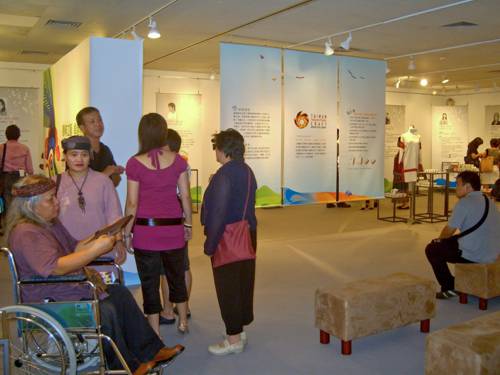
FAQ About The Impact of Globalization on Indigenous Artisans

What is globalization and how does it affect indigenous artisans?
Globalization refers to the process by which businesses, cultures, and economies become integrated and more interconnected internationally. For indigenous artisans, globalization can lead to both opportunities and challenges. It offers a broader market for their crafts, allowing them access to international customers. However, it also introduces competition from mass-produced goods and may threaten traditional crafting techniques as artisans may shift towards more commercially viable products.

How does globalization impact the cultural preservation of indigenous art?
Globalization can impact cultural preservation both positively and negatively. On the positive side, it can lead to wider recognition and appreciation of indigenous crafts and cultures, potentially increasing the value and demand for authentic, traditional art. Conversely, it may lead to cultural dilution as indigenous artisans might adapt their work to appeal to global tastes, potentially losing unique cultural elements in the process.

What are the benefits of globalization for indigenous artisans?
The primary benefits of globalization for indigenous artisans include access to larger markets and increased demand for their crafts, which can boost income and economic sustainability. Global exposure can also lead to cross-cultural exchange, fostering new ideas and collaborations while promoting cultural diversity.

What challenges do indigenous artisans face due to globalization?
Indigenous artisans face several challenges due to globalization, including competition from cheaper, mass-produced goods that can undercut traditional handmade crafts. Additionally, there is often a loss of cultural identity as artisans may be pressured to alter traditional designs to cater to global markets. Intellectual property rights can also be a significant concern, as traditional designs and techniques may be copied without proper acknowledgment or compensation.

How does globalization introduce global market challenges for indigenous artisans?
Global market challenges for indigenous artisans include navigating international trade laws, dealing with fluctuating exchange rates, and understanding global consumer preferences, which can be quite different from local or traditional markets. Furthermore, competition from industrialized craft producers who can produce similar items at a lower cost poses a significant threat.

Are there any opportunities for indigenous artisans to capitalize on globalization?
Yes, globalization presents several opportunities for indigenous artisans. By leveraging the internet and e-commerce platforms, they can access global markets and reach a wider audience. Artisans can also form cooperatives or associations that help them market and manage their work collectively, enhancing bargaining power and resource sharing. Establishing certifications for authenticity can also help protect their cultural heritage while adding value to their products.

How can indigenous artisans protect their cultural heritage in a globalized world?
Indigenous artisans can protect their cultural heritage by advocating for and obtaining intellectual property rights such as trademarks and patents for traditional designs. Forming artisan cooperatives can also help them collectively negotiate better terms with buyers and ensure fair trade practices. Further, using education and awareness campaigns to promote the value and uniqueness of their crafts can bolster efforts to preserve cultural integrity.

What role does technology play in the globalization of indigenous crafts?
Technology plays a crucial role in the globalization of indigenous crafts by providing platforms for artisans to showcase their work, such as on social media and e-commerce websites. These channels enable artisans to engage directly with a global market, broaden their reach, and sell directly to consumers. Additionally, technology can facilitate the documentation and digital archiving of traditional craft knowledge, assisting in preservation and education efforts.

Is there a risk of cultural appropriation through globalization?
Cultural appropriation is indeed a significant risk in the context of globalization. As indigenous crafts become more accessible and popular globally, elements of these cultures may be taken and used out of context or without proper credit and compensation. This can lead to exploitation and misrepresentation of indigenous cultures. Respectful engagement and awareness are essential to preventing cultural appropriation.

How can ethical consumerism support indigenous artisans in a globalized market?
Ethical consumerism can play a vital role in supporting indigenous artisans by encouraging consumers to purchase goods that are culturally authentic, fairly traded, and produced sustainably. Consumers can help by supporting brands and platforms that commit to fair trade principles and transparently engage with artisan communities. This support not only benefits artisans economically but also encourages the preservation of traditional craftsmanship.

What is the significance of fair trade certification for indigenous artisans?
Fair trade certification is significant for indigenous artisans as it ensures that they receive fair compensation for their work, operating under safe conditions, and that sustainable practices are used in production. This certification helps to build consumer trust and opens access to ethical markets where consumers are willing to pay a premium for ethically-produced goods, thus supporting the artisans' livelihoods and cultural practices.

How do international partnerships enhance the reach of indigenous crafts?
International partnerships can significantly enhance the reach of indigenous crafts by providing access to new markets, distribution channels, and resources. These partnerships can facilitate cultural exchanges and collaborative projects that broaden the visibility of indigenous art forms. Moreover, they can help secure better terms for artisans and promote educational initiatives that raise awareness about the cultural significance of their work.

What measures can governments take to support indigenous artisans affected by globalization?
Governments can support indigenous artisans by implementing policies that protect intellectual property rights and traditional knowledge. Funding programs that provide resources for training and marketing can help artisans adapt to global markets. Additionally, supporting fair trade initiatives and creating cultural preservation projects can ensure that the crafts remain true to their cultural roots while empowering artisans economically.

How important is cultural exchange in a globalized market for indigenous artisans?
Cultural exchange is very important in a globalized market as it enables artisans to share their unique heritage and learn new techniques, leading to innovative creations that respect and incorporate both traditional and contemporary methods. Such exchanges can enhance understanding and appreciation across cultures, potentially increasing demand for the artisans' works globally.

How are indigenous crafts marketed in a globalized economy?
In a globalized economy, indigenous crafts are marketed through online platforms, international exhibitions, and participation in global craft fairs. Marketing strategies often emphasize the cultural significance, authenticity, and unique handcrafted nature of the products. Collaborations with ethical brands and using certifications of authenticity also help to establish brand identity and trust among international consumers.

What is the impact of e-commerce on indigenous artisans?
E-commerce has a profound impact on indigenous artisans by providing unprecedented access to international markets, thus increasing sales opportunities beyond local or regional boundaries. It allows artisans to sell directly to consumers, reducing dependency on intermediaries who often manipulate prices. However, artisans may need training and resources to effectively utilize e-commerce platforms to overcome technological and logistical barriers.

How do mass-produced goods threaten indigenous arts in a globalized world?
Mass-produced goods pose a threat to indigenous arts as they often mimic traditional designs and sell at lower prices due to economies of scale. This competition can devalue the artisan's original work and make it harder for them to compete. The proliferation of replicas undermines the uniqueness and cultural significance of genuine indigenous crafts, which can lead to a decline in traditional craft production.

What role do artisan cooperatives play in helping indigenous communities in the face of globalization?
Artisan cooperatives play a critical role in empowering indigenous communities. By pooling resources and collaborating, artisans can improve production efficiency, reduce costs, and achieve better market access. Cooperatives also provide a platform for education and skills development, increased bargaining power, and a stronger voice in advocating for fair trade practices and protecting cultural heritage.

Can globalization facilitate the hybridization of indigenous crafts?
Yes, globalization can facilitate the hybridization of indigenous crafts by exposing artisans to diverse cultural influences, materials, and techniques. This can lead to innovative products that integrate traditional craftsmanship with contemporary styles, catering to modern tastes while respecting heritage. Hybridization can result in wider acceptance and appreciation, opening up new markets for indigenous crafts.

Why is it important to balance modernization with tradition in indigenous crafts?
Balancing modernization with tradition in indigenous crafts is crucial to maintaining cultural heritage while ensuring economic viability. While modernization can bring about new ideas and methods that enhance productivity and market appeal, preserving traditional techniques and cultural stories is essential for sustaining the craft's authenticity and cultural identity. This balance can help protect the uniqueness of indigenous arts while adapting to global market demands.
